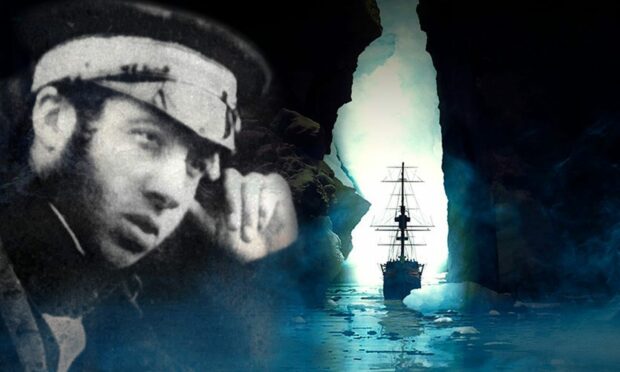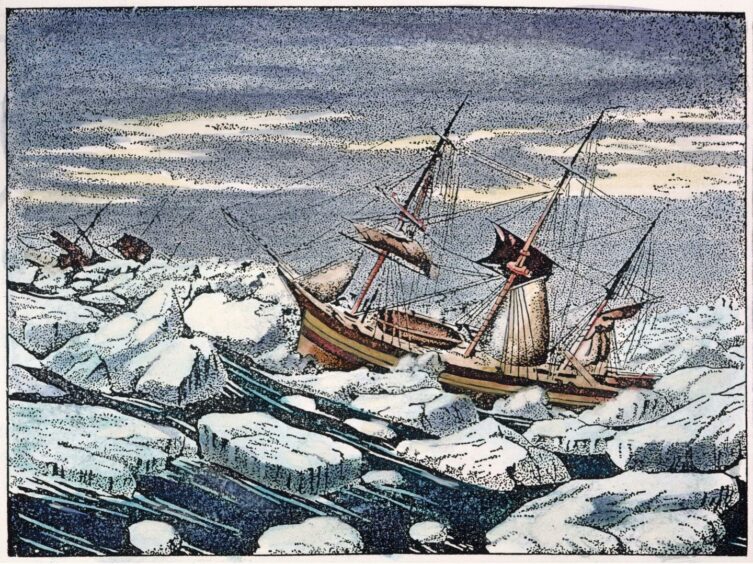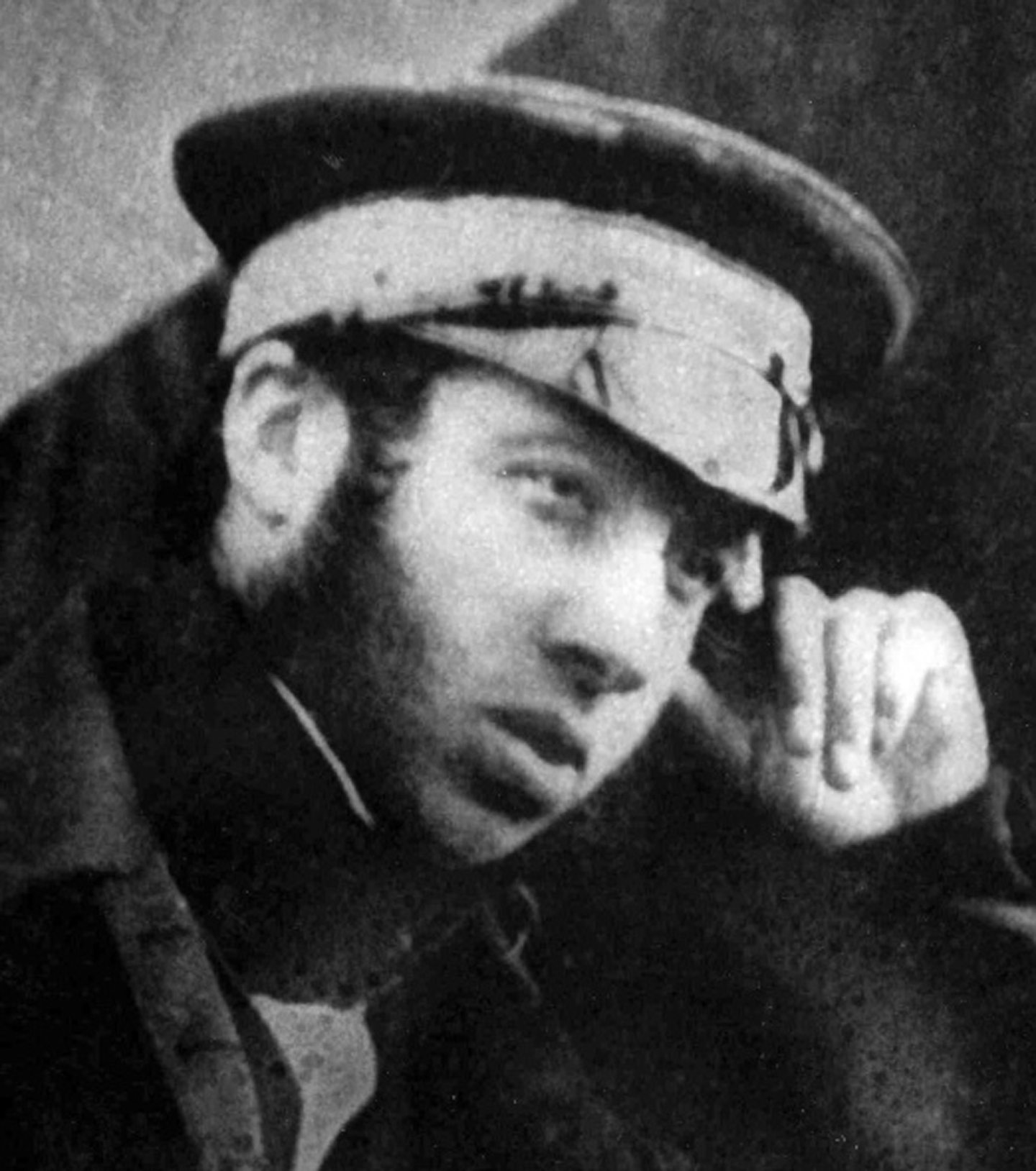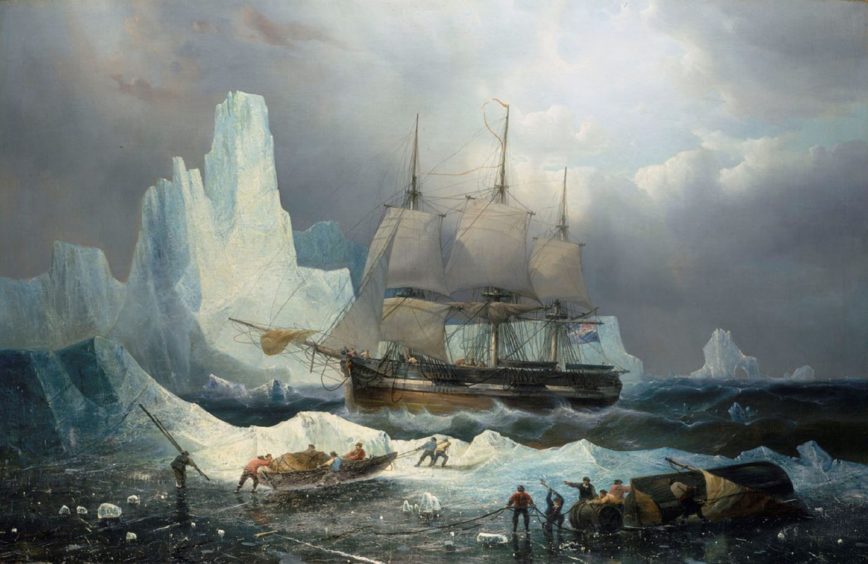Whether skeletal remains from the lost Franklin expedition are those of Fife doctor Harry Goodsir will remain one of the coldest of cold cases.
Born in 1819, Harry grew up in the East Neuk of Fife, at Anstruther Easter.
He was raised by his father, John, the local doctor, and mother, Elizabeth, along with his five siblings: John, Joseph, Jane, Archie, and Robert.
As Harry was growing up, the shores of the Firth of Forth played an important role not only in his upbringing but also in his career.
Walking along its shoreline with his older brother, John, he would collect the abundant marine life in their path, cementing an interest in marine biology for the rest of his life.
Central to Harry’s career path was the example of this older brother, who was perhaps the most accomplished anatomist and the most successful teacher of his time.
Harry followed in the footsteps of his successful brother as he succeeded him in 1843 as the Conservator of the Royal College of Surgeons of Edinburgh Museum.
Harry became a naval surgeon in 1845
Fate intervened for the young doctor and naturalist when he was offered the post of Acting Assistant Surgeon and Naturalist on the Franklin Expedition in 1845.
Arctic veteran Sir John Franklin departed Britain in command of two ships, the HMS Terror and HMS Erebus, to chart the elusive maze of Canada’s Northwest Passage.
The ships docked at Disko Bay where some of the crew sent letters home to their loved ones, which was the last time anyone in Britain heard from the explorers.
The ships were last seen in Baffin Bay in the Arctic three weeks later and after this they vanished without a trace and all 129 men on board perished.
Since the expedition was equipped with three years’ worth of provisions, the Admiralty in London did not send out rescue missions until 1848.
In one of the many subsequent searches in the decades afterwards, an Inuit guide led explorers to a spot on Nunavut’s King William Island in 1869 where a shallow grave contained the almost complete skeleton of an officer.
Those remains were sent home to the UK, where the renowned biologist Thomas Henry Huxley wrongly identified them as Lieutenant Henry Le Vesconte.
A new forensic analysis of the skeleton – which was entombed in the Franklin Memorial in Greenwich – in 2011 found a likely match in Harry, an assistant surgeon on HMS Erebus.
Michael Tracy, of Chicago, Illinois, one of Harry’s closest living relations, has spent more than a decade attempting to get a definitive Goodsir DNA result from Greenwich.
Michael said: “For well over a decade, Dr Simon Mays of English Heritage and myself have worked tirelessly to confirm the identity of the skeletal remains interred beneath Greenwich’s Franklin Monument – presumed by many to be those of my kinsman, Dr Harry Goodsir, who perished in the ill-fated expedition of Sir John Franklin in 1845.
“Our goal was to determine if any ancient DNA could be extracted from a postage stamp of his brother, Dr Robert Goodsir, affixed to an envelope now deposited in the collections of the Centre for Research Collections of the University of Edinburgh.
“Based on consultations with leading genetic scientists, it has been determined there would not be enough mitochondrial DNA, if any, to conduct a comparative analysis of the interred bone fragments.
“Additionally, the parallel examination by Dr Doug Stenton of the hair samples that were attached to the textile that was wrapped with the skeleton have produced a negative result.
“Consequently, despite our best efforts, it is with deep regret that I have to conclude this scientific investigation relative to the stamp.
“Thus, I have failed in my efforts to positively identify Harry.
“That said, I cannot praise too highly the thoroughness of the work Dr Simon Mays and Dr Doug Stenton have demonstrated on these two separate but complementary projects.
“Whilst in scientific terms a negative result is still adjudged a result, I have every faith that future advancements in DNA technology will ultimately uncover the truth of this mystery.
“On a more positive note, I am very pleased to reflect on the photographic recording of the Goodsir Collection as a digitised archive, curated by the University of Edinburgh’s Centre for Research Collections.”
Harry’s brother Robert joined the search
The fate of the crew fascinated Victorians and inspired the acclaimed Ridley Scott TV series The Terror, which gripped viewers in the UK and America.
Harry’s brother Robert was among the many friends, relations, and members of the public who were concerned at the lack of news of the expedition after four years.
Robert first sailed to the Arctic with Dundee whaler Advice in 1849 under the command of William Penny from Peterhead.
He joined Penny again in 1850 as surgeon on an Admiralty-backed Franklin search expedition that included the ships Lady Franklin and Sophia.
Here they found three graves at Beechey Island from 1846, proving Franklin’s presence.
His brother’s name was not on any of them.
The Goodsir family all died not knowing Harry’s fate, even though it’s likely his skeleton was in the UK and interred in Greenwich during some of their lifetimes.
Might those old bones yet yield a name?
Significant advancements in DNA technology are made year on year.
Could these finally grant Robert Goodsir in death what he tried so hard to achieve in life?
The answers to Harry’s final resting place.














Conversation